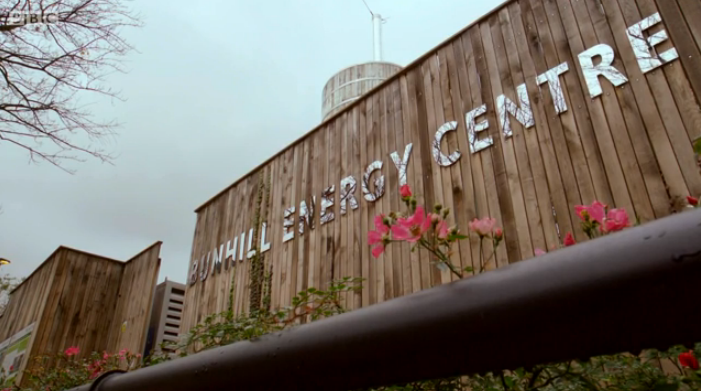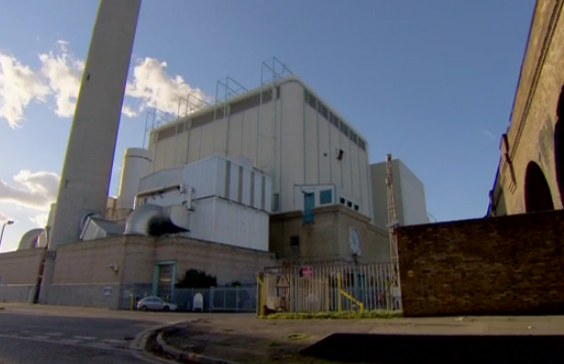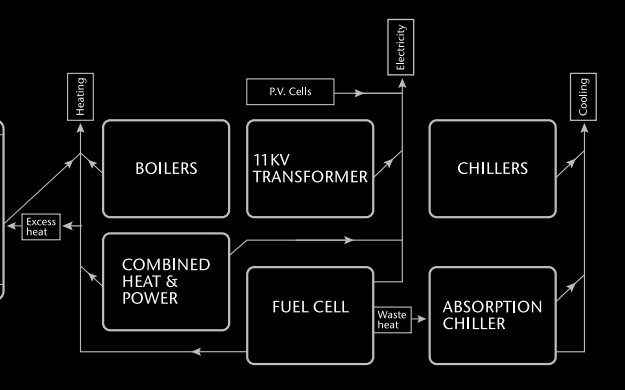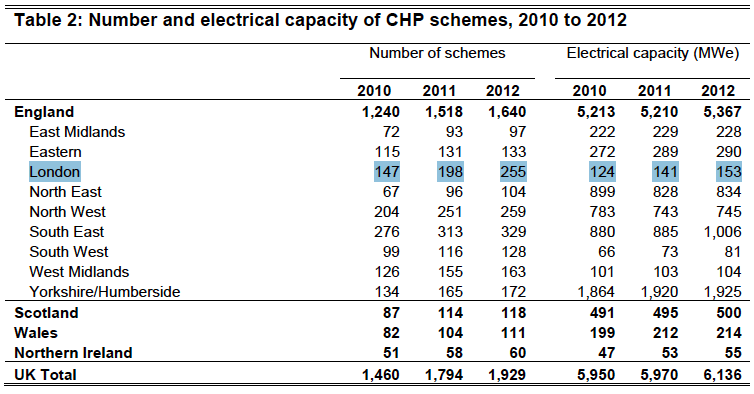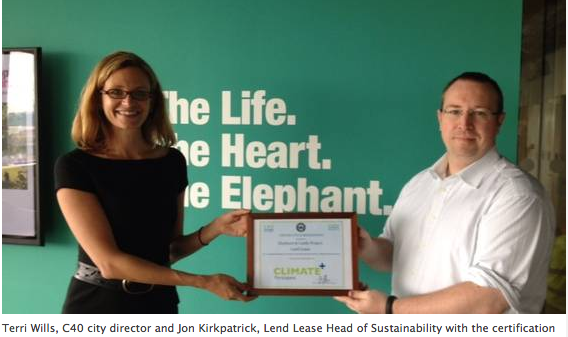Site search:
-
What’s new?
Energy for London Tags
Brent Buildings Camden Carbon Emissions CHP Cities Climate Adaptation Community Heating Community Initiatives Croydon Data DECC Decentralised Energy Distribution ECO Energy Costs Energy Efficiency Enfield FIT Fuel Poverty Funding Green Deal Hackney Haringey Housing Islington Lambeth Library Local Authorities Mayor Newham Ofgem Olympics Photovoltaics Planning RE:FIT RE:NEW Renewable Energy Retrofit Southwark Tower Hamlets Transport Waltham Forest Waste WestminsterEnergy Archives:
- February 2021 (1)
- January 2021 (15)
- December 2020 (15)
- November 2020 (9)
- October 2020 (3)
- August 2020 (5)
- July 2020 (3)
- June 2020 (4)
- April 2020 (10)
- March 2020 (5)
- February 2020 (2)
- January 2020 (3)
- October 2019 (1)
- September 2019 (4)
- August 2019 (2)
- July 2019 (1)
- August 2018 (1)
- November 2016 (8)
- October 2016 (8)
- September 2016 (2)
- August 2016 (8)
- July 2016 (14)
- April 2016 (12)
- March 2016 (16)
- February 2016 (8)
- January 2016 (4)
- December 2015 (1)
- November 2015 (1)
- October 2015 (16)
- September 2015 (3)
- June 2015 (1)
- May 2015 (1)
- April 2015 (1)
- March 2015 (1)
- February 2015 (1)
- January 2015 (1)
- December 2014 (18)
- November 2014 (4)
- August 2014 (8)
- July 2014 (7)
- June 2014 (25)
- May 2014 (8)
- April 2014 (4)
- March 2014 (12)
- February 2014 (7)
- January 2014 (13)
- December 2013 (11)
- November 2013 (15)
- October 2013 (15)
- September 2013 (18)
- August 2013 (5)
- July 2013 (20)
- June 2013 (33)
- May 2013 (8)
- April 2013 (16)
- March 2013 (25)
- February 2013 (14)
- January 2013 (20)
- December 2012 (23)
- November 2012 (23)
- October 2012 (25)
- September 2012 (14)
- July 2012 (12)
- June 2012 (43)
- May 2012 (20)
- April 2012 (8)
- March 2012 (40)
- February 2012 (39)
- January 2012 (40)
- December 2011 (22)
- November 2011 (40)
- October 2011 (33)
- September 2011 (48)
- August 2011 (40)
- July 2011 (58)
- June 2011 (41)
- May 2011 (80)
- April 2011 (38)
- March 2011 (33)
- February 2011 (25)
- January 2011 (24)
- December 2010 (3)
- November 2010 (7)
- October 2010 (6)
- September 2010 (7)
- August 2010 (1)
- July 2010 (2)
- June 2010 (4)
- May 2010 (1)
- March 2010 (3)
- February 2010 (3)
- December 2009 (5)
- November 2009 (2)
- October 2009 (3)
- July 2009 (3)
- June 2009 (1)
- April 2009 (1)
- March 2009 (1)
- February 2009 (1)
- January 2009 (1)
- December 2008 (2)
- October 2008 (1)
- September 2008 (1)
- July 2008 (1)
- March 2008 (2)
- January 2008 (2)
- October 2007 (1)
- September 2007 (3)
- July 2007 (1)
- March 2007 (1)
- February 2007 (3)
- November 2006 (3)
- August 2006 (1)
- February 2006 (1)
- May 2005 (1)
- February 2004 (1)
Tag Archives: CHP
Major London District Heating Scheme refurbished
March 2014: Some welcome news that E.ON are refurbishing the engines of their Smithfield-based Citigen Combined Heat and Power (CHP) district heating systems. The following Edina press release sets out 4 new major gas-fired CHP engines will be installed this year and commissioned by the beginning of 2015. Edina helpfully provide some background to the scheme:
 A City of London case study on the network is available here.
A City of London case study on the network is available here.
Posted in Decentralised Energy, News
Tagged CHP, City of London, Community Heating, Decentralised Energy
Leave a comment
Joining the dots…
March 2014: CIBSE article on CHP and district heating in London “With the Government and planners keen for developers to look at district heating for communal heating schemes, the technology is on the up and up. But size matters with heat networks are are some schemes too small to reap the benefits?” Good article – raising some real concerns over what technical and financial concerns should be considered when pushing district heating – with contributions from the GLA and Islington Council: read the full article here.
Decentralised Heat and Power Points to London’s Energy Future
January 2014: Still a few days left to see BBC’s excellent Inside Out London programme. The first half covers the increasing levels of energy theft being observed by energy companies and -18 minutes in – the programme looks at potential future solutions to the provision of more affordable heat and power in London.
The growth in local energy solutions, such as combined heat and power (CHP) plants and the introduction of new district heating schemes are highlighted, including recent projects installed in Islington (Bunhill CHP) and the heat network constructed from the SELCHP waste to energy scheme, which transports low cost heat to 2,500 households in Southwark with an approximate 22% reduction in heating charges.
Energy & Climate Questions to the Mayor
December 2013: This month the Mayor has been asked questions in relation to:
a debate on how the Mayor will look to address the number of excess winter deaths in London; the impact on London as a result of the Government’s redefinition of fuel poverty; the Mayor’s plans to help tackle fuel poverty (MQs referred to in this answer can be seen here 4251 and 3836); the long terms impacts of climate change; RE:NEW targets to 2015; the Mayor’s view on the recent ‘Green Crap‘ debate; the level of increase in London domestic energy bills over the past three years; funding to improve energy inefficient damp London housing; windfall tax on energy suppliers (see following for link to answer referenced); the energy costs to Londoners as a result of gas fracking; Canary Wharf waste heat offtake; details of the recent £5.6m DECC funding to tackle fuel poverty in London; promoting low cost low carbon energy supplies in London (also see the following MQ 4254); the impact to London as a result of the recent changes to ECO; supporting community-led energy projects such as Brixton Energy; the Mayor’s Low Carbon Entrepreneur competition; opportunities for the London Pension Fund Authority (LPFA) to invest in low carbon projects; thes costs of nuclear power (read Liberum Capital note referred to in question here); London’s top 500 energy-consuming buildings; Nuclear Power versus decentralised energy; the Mayor’s support for fracking and nuclear power; the Mayor’s ambition – as set out in his recent draft Housing Strategy to retrofit London’s “entire stock for improved energy performance by 2020″; the late publication of the RE:NEW evaluation report; the Mayor’s energy advisor visit to heat pump system at One New Change; the Mayor’s energy advisor visit to the Barkantine CHP system; the Mayor’s work with the Better Buildings Partnership; the Mayor’s energy advisor’s work with the C40; the Mayor’s energy advisor visit to Islington’s Bunhill CHP scheme; the Mayor’s energy advisor visit to the Olympic site CHP system; recent events the Mayor’s energy and environment advisor has spoken at; the Mayor’s view on Labour’s proposals for an energy price freeze; future funding for the RE:NEW support team; the Mayor’s comments on wind power; RE:NEW housing retrofit targets; the award-winning Bunhill CHP; the number of fuel poor households to be delivered by RE:NEW; London’s resilience to a nuclear power station radiation leak; fuel poverty advice given to callers to the Mayor’s Know Your Rights helpline; the impact on solid wall insulation as a result of changes to the ECO; tower block residents assisted under the RE:NEW programme;
Previous months questions to the Mayor can be found here.
Posted in News
Tagged CHP, Decentralised Energy, ECO, Fuel Poverty, Olympics, RE:NEW, Solid Wall Insulation, Southwark
Leave a comment
London’s District Heating Renaissance
December 2013: A run through some of the exciting decentralised energy developments currently being taken forward in London – as detailed by Energy for London – ahead of the major national Heat13 conference, which took place in London last week.
Posted in Decentralised Energy, News
Tagged CHP, Community Heating, Decentralised Energy
Leave a comment
Fuel Cells in London
November 2013: The Guardian highlighted in a recent story that the London HQ of Al Gore’s business is to be based in a new office development on Regent Street which has included a wide array of onsite energy measures installed including a gas-powered fuel cell.
“Climate campaigner and former US vice-president Gore said the £400m Quadrant 3 redevelopment showed a “sophisticated commitment to sustainability”. The headquarters of his sustainable investment company, Generation Investment Management, will be sited in the new buildings.
“The cell was developed by US company FuelCell Energy. It will emit 38% less carbon dioxide than using electricity from the grid and heat from gas-fired boilers, according to the crown estate, which says 350 tonnes of carbon dioxide emissions will be saved per year. Unlike fossil-fuel-burning power plants, the fuel cell produces power with virtually no nitrogen oxide (NOx), sulphur dioxide (SOx) or particulate matter (PM) pollution.
The new plant forms part of the central energy system that serves 500,000 sq ft of offices, shops, flats, restaurants and hotels in the Quadrant development.” Read the full Guardian story here.
Further detail on the installation of the fuel cell can be read here – which has been undertaken by Edinburgh based Logan Energy. The Quadrant 3 development has a number of other onsite energy measures installed (including a Combined Cooling Heat & Power plant, thermal stores and photovoltaics – see diagram below), as set out in the property brochure.
Another new London development to include fuel cell technology is that on 20 Fenchurch Street (more commonly known as the ‘Walkie Talkie’ building) which has installed a 300 kWe fuel cell, details of which can be read here and here.
Transport for London installed a fuel cell CHP in their Palestra building in Southwark back in 2010, details of which – including a video presentation – can be seen here and here.
Posted in Decentralised Energy, News
Tagged CHP, City of London, Fuel Cells, Southwark, Westminster
Leave a comment
Developing Heat Networks in London
November 2013: At the BRE’s recent event Developing heat networks in the UK three presentations were delivered on developments in London – links to which follow below:
Bunhill Heat and Power – Charlotte Large, Decentralised Energy Programme Manager, Islington Council
Identifying secondary heat sources for future sustainable heat networks – Peter North, Senior Manager – Programme Delivery (Sustainable Energy), GLA
The third presentation by Ian Smith, Head of Sustainable Services, Southwark Council, on London’s first energy from waste district heating network, can be found here.
Posted in Decentralised Energy, News
Tagged CHP, Community Heating, Decentralised Energy, Islington, SELCHP, Southwark, Waste
Leave a comment
GLA responds to Heat Enquiry
November 2013: The House of Commons Energy and Climate Change Select Committee is currently undertaking an enquiry into Heat. The terms of reference to the enquiry states that “so far much of government’s energy policy focus has been on low-carbon electricity generation (in particular, the Energy Bill, which aims to reform the electricity market). Yet heat is responsible for 46% of UK energy use, approximately a third of UK greenhouse gas emissions, and is a major cost in both the domestic and non-domestic sectors.”
The Greater London Authority (GLA) has submitted written evidence to the Committee outlining the significant decentralised energy programme underway in the capital. The evidence sets out a number of interesting points related to the wider scale deployment of heat networks as well as recommendations to Government in terms of its policies to promote decentralised generation. These include:
- The Mayor welcomes the Committee’s scrutiny of this often over-looked area of energy policy
- There are “inconsistencies in government’s energy policy and regulatory regime that are preventing heat generation and distribution in cities” which “…distort the market for heat by providing external financial support for some technologies, while largely ignoring heat networks“.
- Heat network deployment at the scale envisaged for London represents a significant infrastructural challenge, requiring approximately 3,600km of heat networks to be constructed by 2030 and equates to an investment opportunity of approximately £6bn
- Whilst district heating schemes can qualify for funding under ECO, the current two year target as well as uncertainty regarding longer-term target discourage energy suppliers from investing in these schemes. Government should consider setting longer term targets for the next phases of ECO, or provide guidance on how investment in district heating schemes can contribute to current or future targets
- We estimate that London housing development will generate at the very least £25m per annum under the proposed Allowable Solutions regime – by far the greatest amount of any region. Yet, because measures are likely to be cheaper outside London, London businesses and households will again be subsidising other regions and receiving less investment into low carbon, heating bill reducing measures. In addition, as Allowable Solutions investment is likely to lever ECO investment, there is a risk that the proposed scheme will exacerbate the imbalance in ECO investment away from London.
The Committee’s evidence gathering process continues in November – more of which can be found here.
Rundown on CHP in London
October 2013: Two recent sources issued by DECC provide data on the use uf Combined Heat and Power (CHP) plant in London. A useful article in DECC’s latest issue of Energy Trends provides a breakdown of CHP use in the regions, providing number of schemes, output, capacity installed and much more. Table 2 from the article is reproduced below.
The data shows a significant increase in the number of CHP schemes operating in London over the past two years (147 – 255) – a 73% jump – whilst generation capacity has grown by 29MW, reflecting the typically smaller scale nature (ie <1MWe) of CHP engines being installed in the capital. Of concern however is that Table 2B (below) from the article reveals that, though the capacity level of CHP has increased – the key metric – the output of decentralised lower-carbon heat and power in London – has actually fallen over the past two years. CHP electricity generation has fallen by 1% and heat generation by 2% in 2012 as compared to 2010 numbers. More promisingly however, the statistics indicate that the 2012 levels show a recovery a far steeper decline in output over the period 2010 to 2011 – so hopefully CHP is now ‘on the up’… Continue reading…
Elephant & Castle plans to be ‘Climate Positive’
October 2013: London SE1 community website recently reported that “Lend Lease’s Elephant & Castle programme has been formally recognised by C40 Cities Climate Leadership to become the third project of 18 globally to reach ‘participant’ status.
The ‘climate positive participant’ rating is conferred by sustainability experts acting on behalf of C40’s Climate Positive Development Programme in partnership with the Clinton Climate Initiative.
To achieve this status, Elephant & Castle developers have submitted a roadmap which demonstrates that the scheme is set to be climate positive by 2020.”
Further information on the Elephant and Castle regeneration website states construction started last month on “the first 500 new homes …[which] will be some of the most sustainable, energy efficient and occupier-friendly places to live in Britain.” Amongst the ‘green’ initiatives to be incorporated in to what is one of the largest regeneration sites in Europe will be an ” on-site combined heat and energy centre [which] will not only provide heat and power to the homes and shops, it will also act as an interactive community and educational centre for the public.”
Some further background to this scheme and its carbon-reduction plans can be read in an earlier post here.
Posted in Decentralised Energy, News
Tagged CHP, Community Heating, Decentralised Energy, Planning, Southwark
Leave a comment
Shoreditch Heat Network Nominated for Green Award
September 2013: Hackney Homes has been nominated for an Inside Housing Green Performance Award for its recent refurbishment of the Shoreditch Heat Network. Further details on this scheme are provided on the following Vital Energi case study which describes how the company went about “replacing their ageing, inefficient and expensive gas and oil fired boilers with the London Borough of Hackney’s first council-owned Combined Heat and Power (CHP) plant and heat network“. Further details are also in the following article in the Hackney Post.
Hackney Homes set out that the network installed is “More energy efficient than traditional methods of generation, the combined heat and power engine burns natural gas to generate electricity and uses the heat generated to supply heating and hot water.
Residents will receive individual heat metering prepayment cards, giving them the freedom to manage and budget for their own heating; reducing the financial burden on households whose energy consumption is low.”
New VNEB District Heating Feasibility Study released
September 2013: Building on the November 2012 Vauxhall Nine Elms Battersea (VNEB) Energy Masterplan (7.8MB) (also see a previous post here on the earlier Opportunity Area Planning Framework for VNEB), a more detailed District Heating Feasibility Study has now been prepared for Wandsworth borough council and has been published online on the London Heat Map website.
The Nov 2012 study set out that the “Vauxhall Nine Elms Battersea Opportunity Area (VNEB OA) includes some of the highest density, large-scale development anywhere in London. As such, it offers huge potential for the development of a coherent, low carbon energy supply system.”
Key recommendations at the time included:
- To implement kick-start networks based around early loads in three locations, with routes identified as i. Lambeth ii. Central iii Battersea
- To continue dialogue with the new US Embassy development to show that a district energy network could be developed with benefits for the area and the Embassy.
- To open discussions to reinstate the hydraulic link to the Pimlico District Heating Undertaking Energy Centre – this is referring to a tunnel under the Thames which originally supplied waste heat from Battersea Power Station to the Pimlico District Heating system on the north side of the river (see more on this here and here).
Building on this the new 2013 District Heating Feasibility Study seeks to demonstrate the “commercial case both for individual developers and a centralised operator of a district heating network” examining opportunities for two potential heat network options “the developers’ non-networked approach (as expressed in individual site energy strategy documents)… Heat prices are then set to offer a fixed level of whole life cost benefit to developers connecting to the system. Second, the economic performance of heat delivery for the central scheme operator is demonstrated based on the heat prices identified from the developer perspective.”
Phasing of the build-out of the networks is considered alongwith an investment analysis of the different network options. Key to the recommendations sets out on page of the report is identifying a “project champion’ within the delivery vehicle to provide impetus and encouragement to the private sector to participate in the scheme”.
Posted in Decentralised Energy, Library, News
Tagged CHP, Community Heating, Decentralised Energy, Lambeth, Wandsworth
Leave a comment


